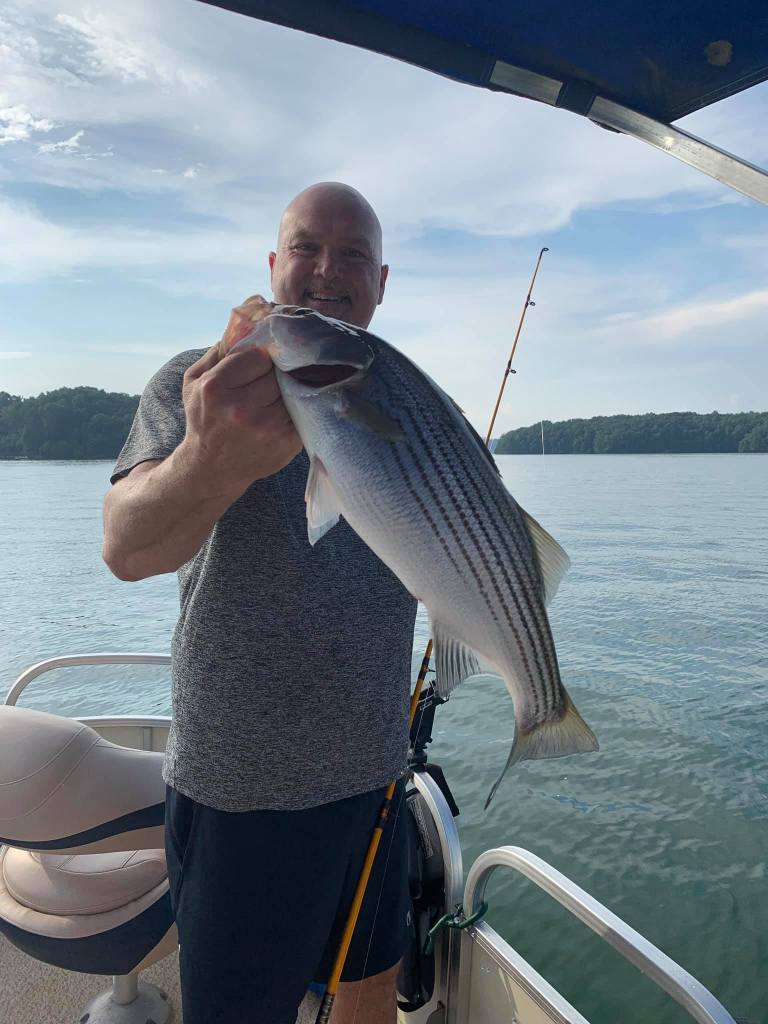OUTDOORS: Planer boards
Published 9:48 am Thursday, December 1, 2022

- Brandon Davis from Bent Rod Charters with a nice striper.
As striper fishing has gotten more popular southern anglers are adding techniques and gear more common in the Great Lakes for salmon or walleye than below the Mason Dixon line. Planer boards, dipsy divers, down riggers and trolling weights are all items you just never saw here at Lake Oconee 30 years ago. I know guys these days using every one of them for our stripers and hybrids. But let’s talk about planer boards to start with.
Years ago, my father and I tried using these on our boat after watching a striper tournament on TV. If I remember, we ended up frustrated and with a tangled mess and the boards probably in a tree. Now, all these years later, I am still learning how to use them, but with so many of my friends like Capt. Brandon Davis of Bent Rod Charters and Capt. Kevin Wahl of Wildside Charters, I am making definite progress. To help you guys join the planer board community, I am including a little how-to here.
Gear
•Line counter reels are not a must here but dadgum they do help a lot.
•7 foot medium to medium heavy rods
•Mainline 16 to 20-pund mono or even go to braid.
•Swivel — if you need to add weight to your bait this is a good way to get it down. Use bigger swivels for more weight.
•Bead — drop a bead on there right about the swivel. It’ll help protect your rod tips. Also, once again, it adds a little weight.
•Split shot, if needed, or larger weights if you think it’s necessary. Honestly, though, use weights sparingly. You want a truly natural presentation here.
•Leader — flourocarbon is a must here in many of our opinions. And run it long. I go shorter in cold weather to make the bait stay closer to the lead. However, Capt. Davis goes long — 12 feet or so. He wants to make sure it looks as natural as possible.
•Hooks — Now this is going to depend entirely on your bait. Threadfin shad are going to mean pretty much a small hook. Something like a 2 or 4 mosquito hook. Gizzard shad might get you up to a #1 or even a 1/0. Blueback herring might be a #2 mosquito. If the fish start swallowing the hook this means it’s an aggressive bite and unless you are keeping them switch to a circle hook to limit unintentional harm to the fish.
How to start
Start with your first board. Run your bait to begin with about 30 feet out then attach the planer. Let this run out to where you think the fish might be. This can range from just 10 yards off the gunnels to a ways out!
Drag — Don’t lock your drag down. You need it just tight enough to allow you to set the hook when the fish takes off. Often, they are going to hit this presentation and throw a lot of slack in the line. So pay attention.
Speed — Capt. Barndon Davis likes to run his boards with the trolling motor and tries to stay between 0.7 mph and 1mph. Varying the speed to achieve depth and presentation.
Important ques:
ALWAYS pay attention to where your bait is. Once you get a bite notice the depth, conditions, structure, etc. That way you can replicate it.
Experiment with your speed and presentation but ALWAYS run a flat line out the back of the boat. When you can Capt. Davis recommends throwing a gizzard shad back there. It’ll help attract fish even if they don’t bite it.
Now I need to give some special thanks to several people. Capt. Mack Farr, Capt. Brandon Davis, and Capt. Kevin Wahl (also known as The Porcupine of Lake Oconee), without these guys I wouldn’t have the slightest clue of what to do. Each of them answers my texts, calls, and messages about this stuff. So when you need equipment or guides reach out to them.

